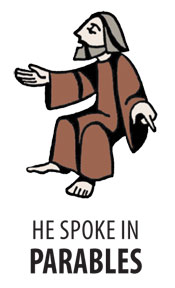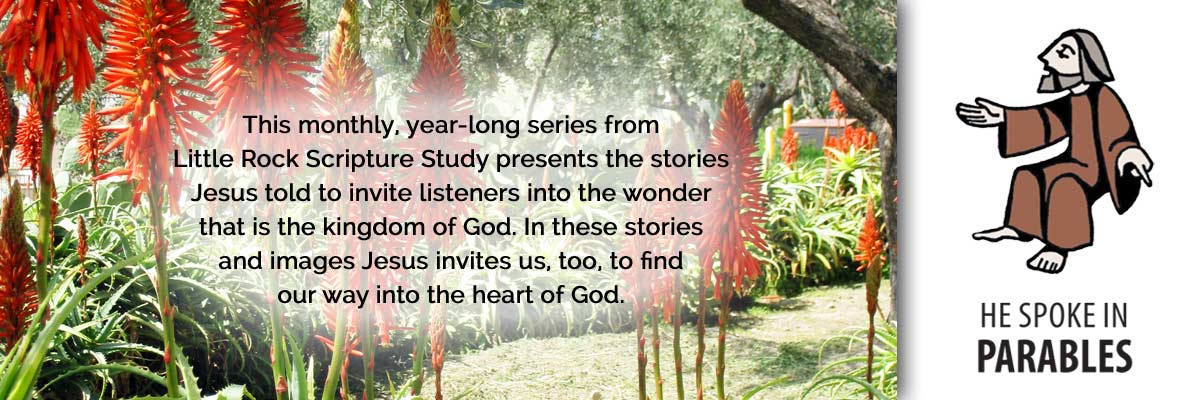Official Website of the
Catholic Diocese of Little Rock
Seed holds lessons of God’s kingdom
Published: April 14, 2015
This is the fourth column in a 12-part series.
By Cackie Upchurch
Director of Little Rock Scripture Study
Many gardeners will scoff at the idea that the mustard seed is the smallest of all seeds as Jesus indicates in at least two uses of this image in the Gospels. In fact, there are smaller seeds, even evidence of them in the ancient Middle East. And, truth be told, most varieties of mustard seed do not produce large trees. Rather, small to medium shrubs or a relatively small tree may crop up where mustard seeds are planted.

Perhaps we can admit that Jesus was not primarily concerned with the science of agriculture or botany. But he was masterful in his use of natural elements to stir the religious imagination of his hearers.
In Mark 4:30-32, Matthew 13:31-32 and Luke 13:18-19, Jesus speaks in slightly different ways about the small mustard seed, the large plant it produces and the shade and protection given to birds who nest in its branches. In each case he is offering an image to describe the kingdom of God (or the kingdom of heaven in Matthew).
One approach to understanding these mustard seed parables is to dwell on the seed itself. It could be seen as symbolic of faith, as later in the Gospel of Matthew where Jesus says, “if you have faith the size of a mustard seed, you will say to this mountain, ‘Move from here to there,’ and it will move” (Matthew 17:20). In such a scenario, the focus of attention is the small amount of faith that can bear fruit and produce mighty deeds.
Another approach focuses on the resulting tree or large plant. This emphasizes the value of patient waiting for growth, believing that just as vegetation springs forth eventually, so shall faith, once rooted, become a vibrant sign for all to see and admire.
Perhaps not as popular, there are those interpretations that zero in on the function of the tree or plant. Birds of the air may find a temporary shelter or even a dwelling place perched on its limbs or branches. Could a listener imagine himself as the one needing such shelter in the faith of the Church? Or could she rest secure knowing that her faith was growing strong and beautiful?
All of these are possible entry points into what we call the parable of the mustard seed, but one more key is that Jesus is intent on describing the kingdom of God when using this image. From the beginning, John the Baptist and Jesus had been announcing the kingdom, not as some far off possibility but as a reality that is quite near: “The kingdom of heaven is at hand!” (Matthew 3:2, 4:17; Mark 1:15).
When commissioning the 72, Jesus instructed his followers to expect resistance but stay where received, to heal the sick and assure them that “the kingdom of God is at hand” (Luke 10:9-11). When asked by the Pharisees to identify when the kingdom of God would come, Jesus replied, “The coming of the kingdom of God cannot be observed, and no one will announce, ‘Look, here it is,’ or ‘There it is.’ For behold, the kingdom of God is among you” (Luke 17:20-21).
What makes us resistant to believing that the kingdom Jesus ushered in is actually in our midst? One day of reviewing news headlines, or dealing with dis-cord in our families, or charting the abuses against children or the environment, or any number of other things, can certainly prevent us from hearing what Jesus is clearly saying. How can the kingdom of God be among us when we see so much evidence to the contrary?
But, seeing we must do. That tiny mustard seed can hardly be detected hidden among the clods of dirt and clay where it is planted and yet it holds within it the potential for abundance. In a similar way, we have to search out even the tiny signs of God’s kingdom, confident that the fullness of that kingdom will emerge as we hope and believe and work in this garden that is our Earth.
When we pray the words Jesus taught his followers, we invite the coming of God’s kingdom and the doing of God’s will on Earth as it is in heaven. That tiny seed of God’s kingdom takes root in the here and now, in the places where we live and work and raise our families.
Study Questions
- When you read any of the parables of the mustard seed, what element of the brief teaching usually captures your imagination? Why? (See Mark 4:30-32; Matthew 13:31-32; Luke 13:18-19.)
- What advantage do you find in Jesus using a parable such as this to talk about the kingdom of God rather than using a straightforward rational explanation of the kingdom?
- When you consider the daily world in which you live, where do you see signs that God’s kingdom is present, even if not yet fully evident?
- Take some time to pray the words of the Lord’s Prayer. How does the line “thy kingdom come, they will be done, on Earth as it is in heaven” come to life for you after pondering the teaching of the mustard seed?
This article was originally published in Arkansas Catholic April 11, 2015. Copyright Diocese of Little Rock. All rights reserved. This article may be copied or redistributed with acknowledgement and permission of the publisher.




